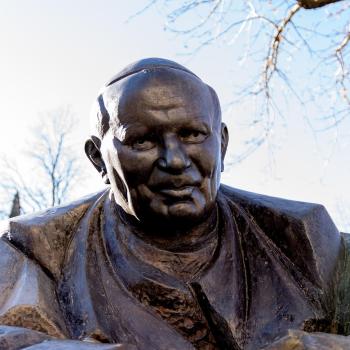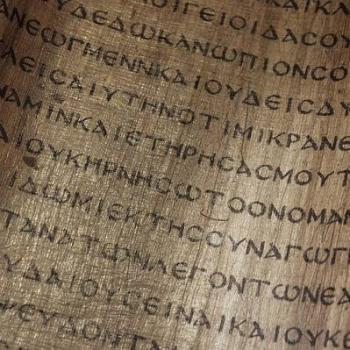THE QUESTION:
Why do most Christian churches baptize babies?
THE RELIGION GUY’S ANSWER:
This classic issue unexpectedly popped up as news on June 23 due to an Irish Times interview with Mary McAleese, an attorney and the former president of Ireland. McAleese assailed her Catholic Church for its practice of baptizing infants shortly after birth with parents making vows on their behalf.
That treats children as “infant conscripts who are held to lifelong obligations of obedience,” she protested, and that’s a violation of their human rights. “You can’t impose, really, obligations on people who are only two weeks old” or inform them “at seven or eight or 14 or 19 here is what you contracted; here is what you signed up to,” because they did not give their own consent to be church members.
To her, the church’s age-old baptismal practice “worked for many centuries because people didn’t understand that they had the right to say no, the right to walk away.” But she says modern people “have the right to freedom of conscience” although “the Catholic Church has yet to fully embrace that thinking.”
Baptist-type churches that arose in the Protestant Reformation, and many of today’s independent evangelical congregations, agree with McAleese and practice “believer’s baptism” based on the personal decision of each individual. The Church of God in Christ, probably the largest African-American denomination, puts its outlook this way: Baptism “is an outward demonstration that one has already had a conversion experience and has accepted Christ as his personal savior.”
Groups that baptize only youths and adult converts, not babies, almost always insist that the rite involve full bodily immersion in water, not mere pouring of water over the head as in normal Catholic practice.
The majority of Protestants baptize infants, following Luther, Calvin, and most other leaders of the Reformation, in churches such as the Anglican and Episcopal, Presbyterian and Reformed, Methodist, and Lutheran.
One typical explanation came in the early (1561) Belgic Confession. It says the two sacraments of baptism and Communion “are visible signs and seals of something internal and invisible, by means of which God works in us through the Holy Spirit,” not mere “empty and hollow signs.” Because God has replaced Old Testament circumcision of male babies with baptism of both genders, “our children ought to be baptized and sealed with the sign of the covenant, as little children were circumcised in Israel.”
McAleese’s remarks drew an immediate rejoinder from Irish theologian Vincent Twomey. He told the international Catholic news magazine The Tablet that the former president “is seriously mistaken if she thinks that baptism is about human rights rather than divine grace.”
That viewpoint was developed by Kathy Schiffer, blogging June 30 for America’s conservative National Catholic Register. She wrote, accurately, that Protestants who don’t baptize infants consider this an “ordinance” and not a “sacrament,” so that the ceremony symbolizes the individual’s new life in Christ with personal profession of faith.
Catholicism, however, believes the sacraments are rites “by which God confers upon us his his grace.” Thus baptism purifies the child from sin, makes him or her a “new creation,” and bestows church membership. Responsible Christian parents will naturally want to provide their offspring these spiritual benefits, Schiffer says.
The Catholic Catechism puts things this way: “The Church and the parents would deny a child the priceless grace of becoming a child of God were they not to confer Baptism shortly after birth.” Moreover, the Catechism says “baptism is necessary for salvation,” citing Jesus’ words in John 3:5: “No one can enter the kingdom of God without being born of water and Spirit.”
Eastern Orthodoxy agrees with this sacramental theology, but like the Baptists believes the rite must involve full bodily immersion in the water, due to the literal meaning of the Greek word for baptism. Except in emergencies (for instance if death is imminent), infants are immersed in a church front three times as the priest pronounces Christianity’s standard New Testament formula “in the name of the Father, and of the Son, and of the Holy Spirit” (Matthew 28:19). Normally this is followed immediately by the newborn’s first Communion, with bread fragments mixed in wine and administered with a spoon.
Baptists and the others believe individual decision, followed by a symbolic rite involving personal faith testimony, was the mode in the original church that Catholicism and Orthodoxy abandoned with babies. Against that, infant baptism proponents argue that collective baptisms depicted in the New Testament almost certainly would have included young children. Examples are the baptisms of Lydia’s “household” (Acts 16:15), of the jailer’s “family” (Acts 16:33), and Stephanas’ “household” (1 Corinthians 1:16).
(Incidentally, The Religion Guy himself has held long memberships in churches on both sides of this baptism divide.)












